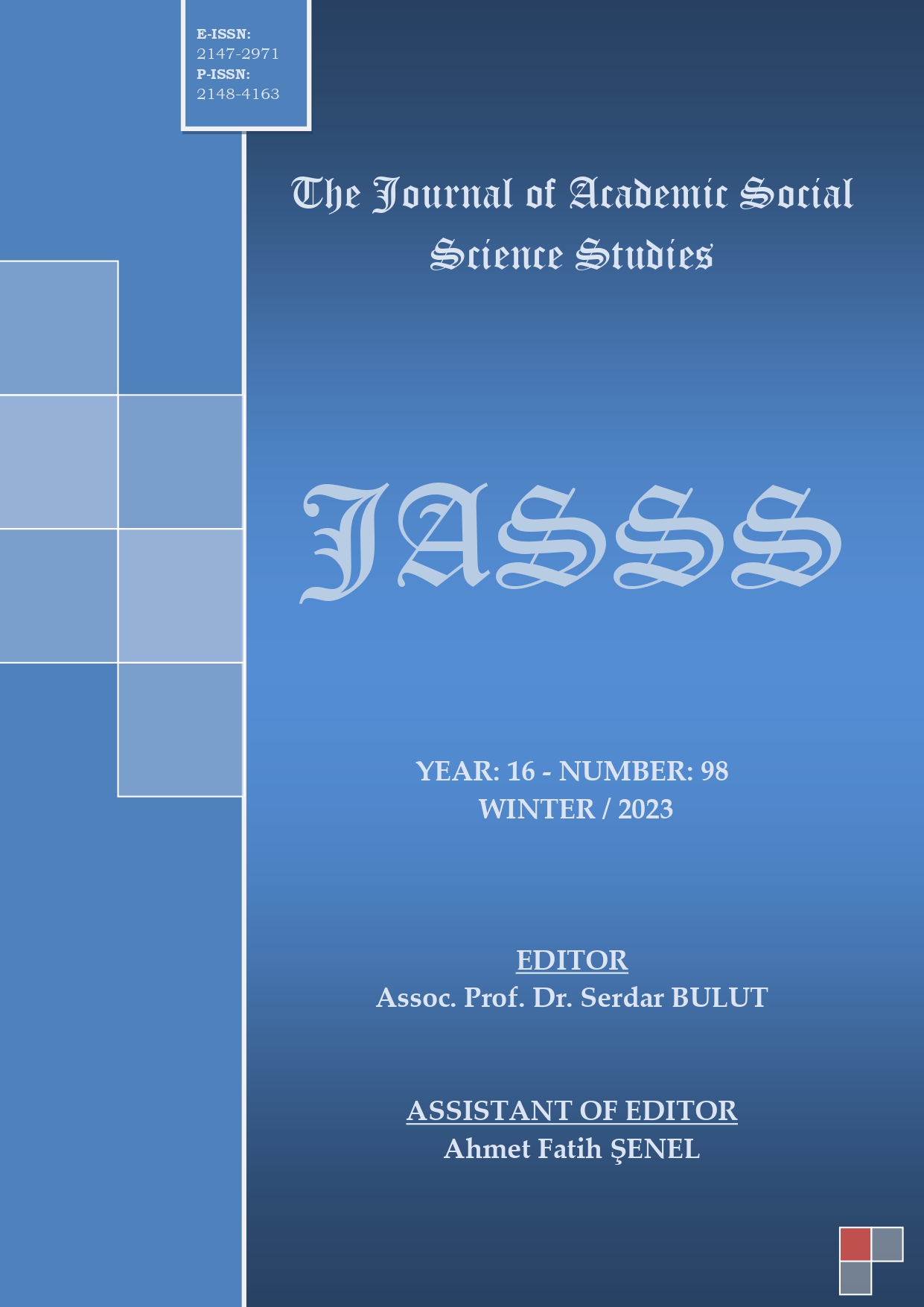BUHÂRÎ’NİN TEFSIRİNİ EBÛ UBEYDE VE FERRÂ’DAN NAKLETTİĞİ KUR’AN KELİMELERİ VE M. FUAT SEZGİN’İN DEĞERLENDİRMELERİ
Author :
Abstract
Çalışma, Buhârî’nin (ö.256/870) tefsirini, Ebû Ubeyde (ö.209/824[?]) ve Ferrâ’dan (ö.207/822) naklettiği Kur’an kelimeleri ve bu kelimelerin tefsirlerine ilişkin Fuat Sezgin’in (ö.2018) tespitleri ve değerlendirmeleri üzerinedir. Başlıktan da anlaşılacağı üzere çalışma iki kısımdan oluşmaktadır. İlki, el-Câmi‘us’-sahîh’de açıklanan ve Sezgin tarafından tespit edilen Kur’an kelimeleridir. Burada Buhârî’nin Kaynakları adlı eserde ek olarak sunulan III. ve IV. Lahika esas alınmaktadır. Sezgin bu eklerde el-Câmi‘us’-sahîh’in bölümlerinde yer alan Kur’an kelimelerine dair Ebû Ubeyde ve Ferrâ’dan yapılan tefsir nakillerini listelemektedir. İşte çalışmanın ilk kısmında bu eklerde yer alan Kur’an kelimeleri, sayı ve Buhârî’de geçtiği bölüm açısından ele alınmaktadır. Söz konusu kelimeler çalışmamızın sonunda toplu olarak tablo halinde de verilmektedir. Ayrıca çalışmanın ilk kısmında Buhârî’nin bu iki müfessirden aktardığı kelime tefsirlerinin biçim ve içeriğine ilişkin örnekler verilmektedir. Çalışmanın ikinci kısmı ise Buhârî’nin Ebû Ubeyde veya Ferrâ’dan yaptığı nakillere ilişkin Sezgin’in değerlendirmesi üzerinedir. Burada Sezgin’in Buhârî’nin Kaynakları adlı eserinin ikinci bölümü temel alınmaktadır. “Buhârî’nin Kur’an Tefsiri ve Kaynakları” başlığını taşıyan bu bölümde Sezgin, Kitâbu’t-tefsire ilişkin tespitlerin yanı sıra Kur’an kelime açıklamalarında müracaat edilen kaynaklar, bu açıklamaların nakil biçimi ve nakillerde yapılan tasarruflar üzerinde durmakta ve bunları değerlendirmektedir. İşte ikinci kısımda Sezgin’in bu tespit ve değerlendirmeleri sistematik hale getirilerek açıklanmaktadır. Çalışma ile el-Câmi‘us’-sahîh’de tefsiri Ebû Ubeyde ve Ferrâ’dan nakledilen kelimelerin sadece anlam bakımından değil zaman zaman sarf ve kıraat bakımından da ele alındığı görülmüştür. Ayrıca söz konusu eserde bu iki müfessirin tefsirinde yer almayan kelime açıklamalarının da olduğu tespit edilmiş, dolayısıyla eserin zengin bir tefsir malzemesi içerdiği anlaşılmıştır. Buhârî’nin Ebû Ubeyde ve Ferrâ’dan nakiller yaparken bazı tasarruflarda bulunduğu hatta kaynaktaki anlamı bazen olduğu gibi yansıtamadığı fark edilmiş, bu yüzden kaynakla mukayeseli olarak okumalar yapılmasının uygun olacağı kanaatine varılmıştır.
Keywords
Abstract
The study is based on Fuat Sezgin's (d.2018) determinations and evaluations about the words of the Qur'an that Bukhari (d.256/870) transmitted from Abu Ubaidah (d.209/824[?]) and Ferra (d.207/822) and the interpretations of these words. As can be understood from the title, this study consists of two parts. The first one is the words of the Quran explained in al-Jami'us’-sahih and determined by Sezgin. Here, in the work Buhari's Sources, III. and IV. Lahika is based on. In these appendices, Sezgin lists the tafsir quotations from Abu Ubeyde and Ferra regarding the words of the Qur'an in the chapters of al-Câmi'us'-sahih. Here, in the first part of the study, the words of the Qur'an in these appendices are discussed in terms of numbers and the section in al-Câmi'us'-sahih. These words are also given in a table at the end of our study. In addition, in the first part of the study, examples of the form and content of the word tafsir that Bukhari transferred from these two commentators are given. The second part of the study is on Sezgin's evaluation of Bukhari's transmissions from Abu Ubeyde or Ferra. Here, the second part of Sezgin's Bukhari's Sources is taken as a basis. In this section titled "Bukhari's Tafsir of the Qur'an and Its Sources", Sezgin makes determinations about Kitabu't-tafsir. In addition, he focuses on the sources that Buhari refers to in the word explanations of the Qur'an, the way of conveying these explanations, the savings he made in the transfers and evaluates them. In the second part, these determinations and evaluations of Sezgin are explained in a systematic way. With the study, it has been seen that the words transmitted from Abu Ubeyde and Ferra in al-Câmi‘us'-sahîh are not only discussed in terms of meaning, but also in terms of word structure and recitation. In addition, it has been determined that there are also word explanations in the work in question that are not included in the commentary of these two commentators, so it is understood that the work contains a rich exegetical material. It has been noticed that Bukhari made some savings while quoting from Abu Ubeyde and Ferra, and sometimes he could not reflect the meaning in the source as it is. Therefore, it was concluded that it would be appropriate to read the Kitabu't-tafsir section of the work in comparison with the sources.





